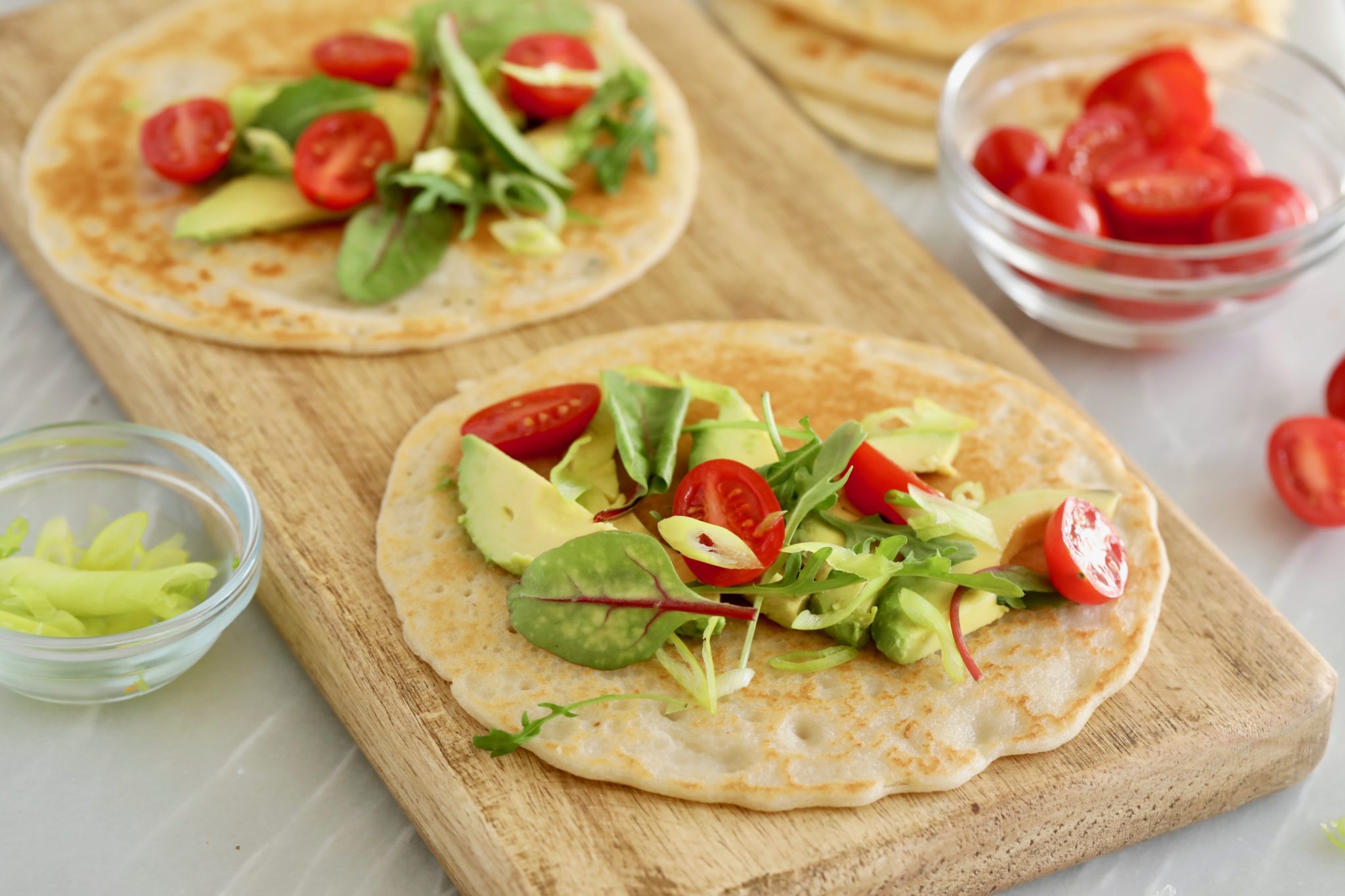
This post may contain affiliate links. Please see my full disclosure for details.
Hi Bold Bakers!
Sometimes, if you haven’t pursued alternative baking before, it might feel like the only way to cut the sugar and the carbs is by entirely eliminating your favorite sweets and baked goods. Well, from Gluten-Free Chocolate Cupcakes with Sugar-Free Frosting to my Vegan Chocolate Chip Cookies, hopefully, I’ve shown you that with just a few swaps you can bake up a storm and still feel great about your diet and nutrition.
I’m so excited to be giving you guys the tools to take your favorites and reinvent them.
One of the first things we think we need to eliminate from our diet to get healthier is bread. While cutting back on carbs and gluten can be good for you, you do not need to give up on light fluffy and savory bread! The recipe for my 3 Ingredient Gluten-Free Flatbread is made with things you likely have on hand if you’re into alternative baking, but you may never have combined before.
From breakfast burritos to wraps, to little personal flatbread pizzas, these versatile flatbreads are about to become one of your healthy staples!
How To Make Almond Flour
One of the main ingredients in my 3 Ingredient Gluten-Free Flatbread recipe is almond flour. This ingredient is what differentiates my flatbread from the wheat-based ones that are not the most friendly to a gluten-free or low-carb lifestyle.
For those that might not already know, almond flour is simply almonds ground into a fine powder and used as a gluten-free flour. It’s a great replacement for flour or wheat flour, as it has no gluten or wheat with the added value of fiber, healthy fat, and a lovely texture. If you can’t find almond flour at your local store, you can easily make it at home by following Gemma’s recipe for Almond Flour.
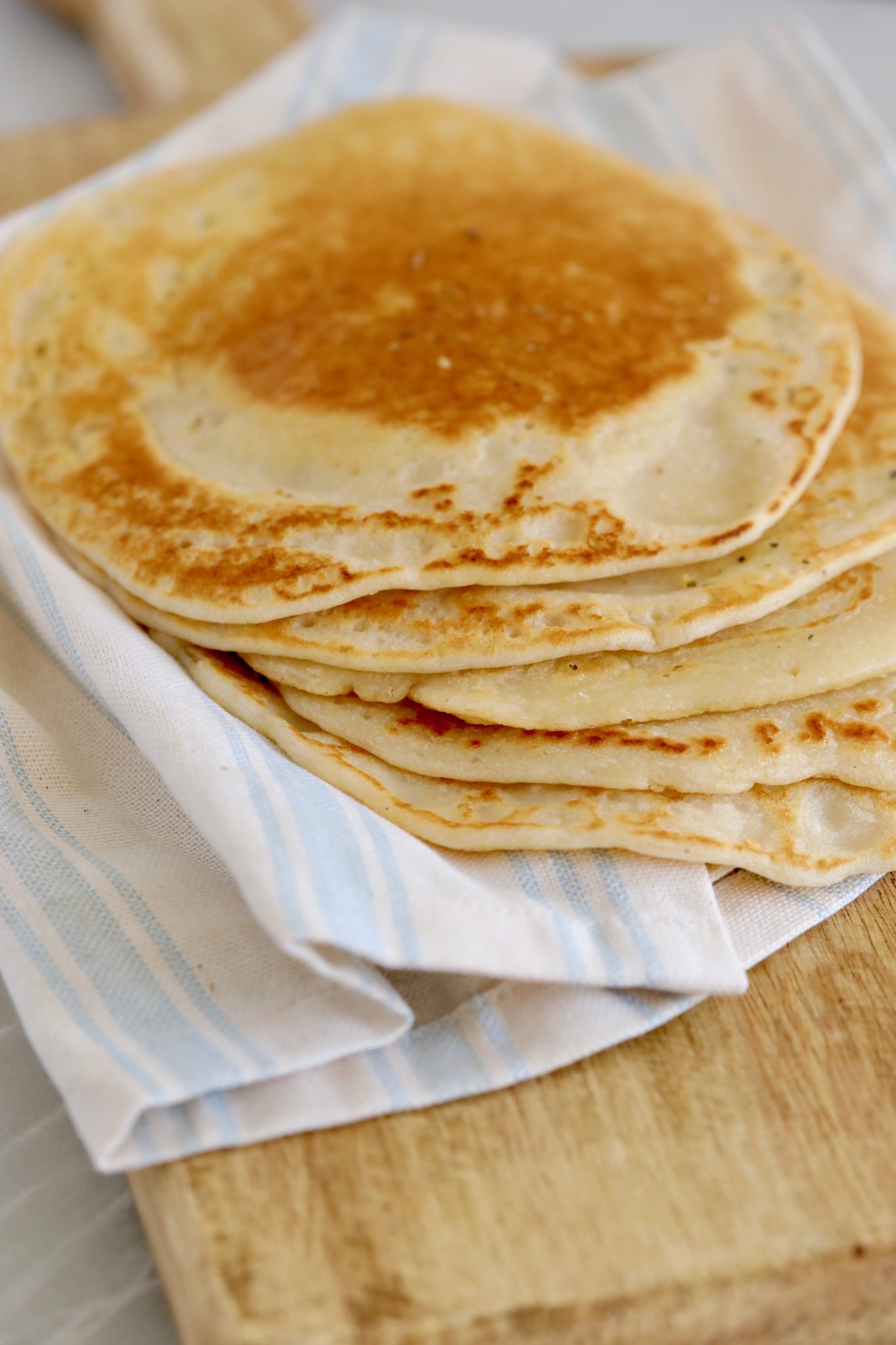
What Is Tapioca Starch?
Tapioca starch is the other major ingredient in my flatbread recipe. Tapioca starch, made from the dried ground cassava root, might sound unusual but it’s very commonly used as a way to add elasticity and chew to gluten-free baked goods.
This alternative flour works with the almond meal to bind the flatbread together. It also makes the flatbread nice and sturdy, perfect for rolling up burritos or wraps. If you can’t find tapioca starch, you can replace it with arrowroot flour or potato starch. I personally like tapioca starch the most as it has the most natural flavor and the lightest texture.
Is The Consistency Of Gluten-Free Flatbread Different From Regular Flatbread?
The texture of my Gluten-Free Flatbread is light and chewy with a nice crispness on the outside. I suggest serving this while still warm, as it really has a nice crust and nutty flavor.
Once cold or at room temperature, the gluten-free bread remains soft and fluffy but is slightly less crisp. I suggest making a batch and keeping them in the fridge. The next morning, just pop them in a frying pan with some scrambled eggs, bacon, and salsa, and BAM! You’ve got the tastiest gluten-free and paleo breakfast burrito in town!
So, consistency-wise, using this absolutely gluten-free flatbread recipe gets as close as you can possibly get to a regular flatbread.
What You’ll Need To Make Your Homemade Flatbread That’s Easy And Delicious
- Large bowl
- Whisk
- Non-stick pan
- Wire rack
- Measuring cups
How To Make Flatbread That’s Gluten-Free
It’s simple, and you’ll be on your way to an easy, gluten-free bread experience in no time (and make sure you get the recipe with all the measurements down below):
- Combine almond flour, tapioca starch, salt, and garlic in a large bowl.
- Add coconut milk and whisk.
- Heat non-stick pan on medium. Add coconut oil or ghee and melt.
- Spoon 1/3 cup of batter into pan.
- Cook flatbread for 3 minutes for one side, before flipping to another side for 1 to 2 minutes until golden brown.
- Remove from heat and transfer to wire rack.
- Repeat until all the batter is used.
How Long Can You Store This Flatbread?
As mentioned, the flatbread is best when served fresh — but it does keep and reheat very well for up to 3 days. To store it, just cover it in an airtight container and place it in the fridge.
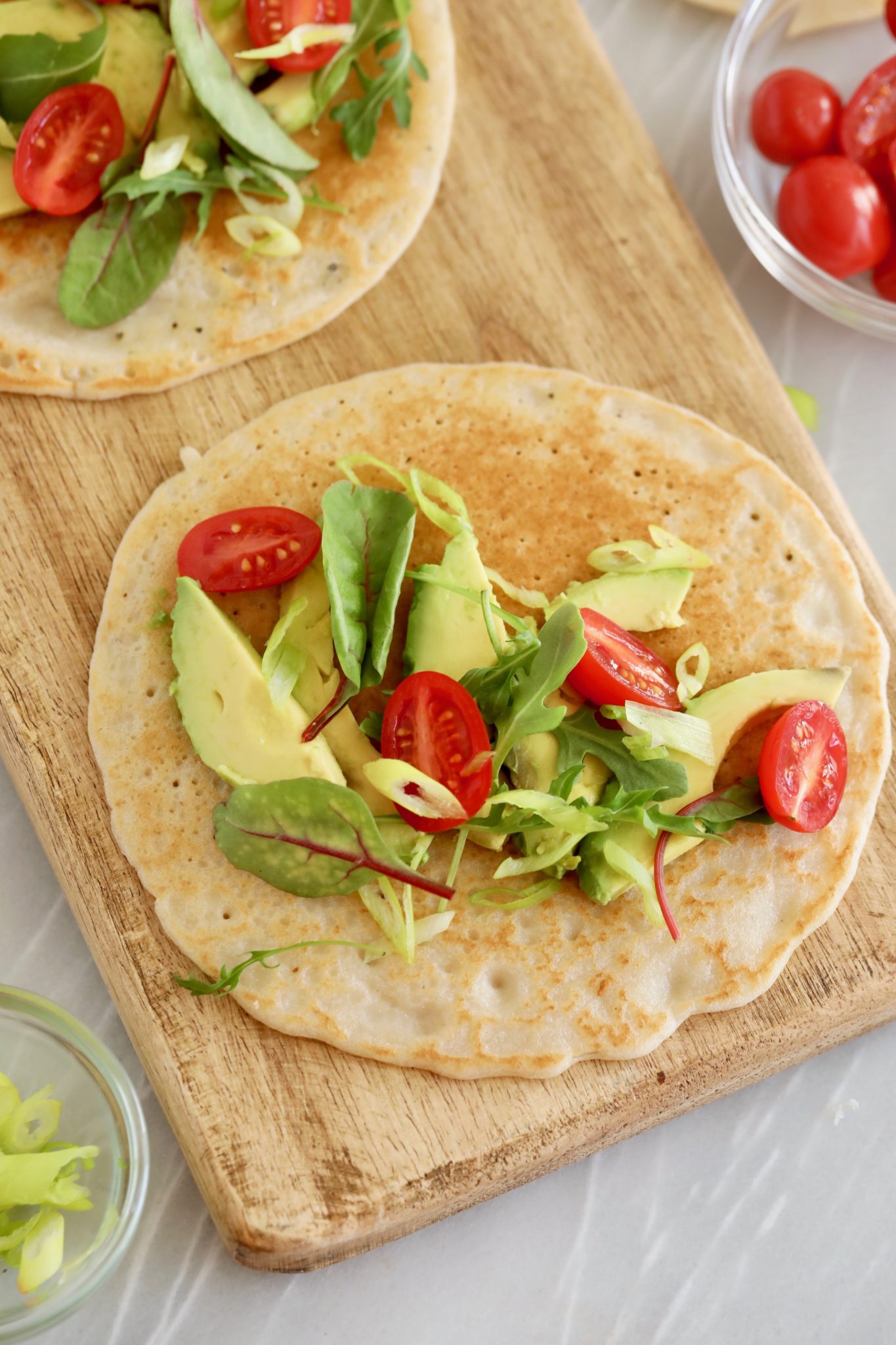
How to Serve 3 Ingredient Gluten-Free Flatbread
The best part about my 3 Ingredient Gluten-Free Flatbread recipe is that is can be used in so many ways.
From filled with avocado, tomato, and wrapped up for a vegan lunch, to dipped in creamy hummus, if you think it’s a good idea it probably is. I like them all on their own brushed with a little ghee and topped with fresh herbs. I encourage you all to get creative and serve dip or wrap these any way you want with your favorite things.
Is Flatbread Healthy?
In general, flatbread is a healthy alternative to bread. It’s lower in calories and higher in fiber. On top of that, it doesn’t have to much fat either. And since this flatbread is gluten-free, it’s even healthier.
While a typical flatbread might 234 calories, a gluten-free flatbread has around 126 calories.
Looking For A Regular Flatbread Recipe?
If you’re looking for a flatbread recipe with all-purpose flour, yogurt, and baking powder, try Gemma’s Flatbread recipe with only 3 ingredients.
Get More Healthful Recipes!
And don’t forget to buy my Bigger Bolder Baking Cookbook!
Full (and printable) recipe below!
Watch The Recipe Video!
3 Ingredient Gluten-Free Flat Bread
Ingredients
- 1 cup (4oz/115g) almond flour*
- 1 cup (4oz/115g) tapioca starch*
- 1 can (387g/13.6oz) coconut full fat milk*
- 1 teaspoon coconut oil (or ghee for frying)
Optional add-ins:
- 1/4 teaspoon salt
- 1/4 teaspoon garlic powder
- 2 tablespoons (1oz/28g) butter (or ghee)
- fresh parsley (or cilantro, chopped)
Instructions
- In a large bowl combine the almond flour, tapioca starch, salt, and garlic — if using.
- Add in the coconut milk and whisk to combine until you have a smooth thick batter.
- Heat a large non-stick pan over medium heat. Add in the coconut oil or ghee and allow to melt.
- Once the pan is at an even, moderate heat, spoon 1/3 cup of the batter into the pan, allowing the batter to spread out, it should be roughly an 8-inch circle (although you can make the flatbread large or smaller if desired).
- Cook the flatbread on the first side for about 3 minutes or until tiny bubbles begin to form around the outside. Flip the flatbread and allow to cook on the other side for about 1-2 minutes until golden and brown. Remove from the heat and transfer to a plate or rack. Repeat this process until all of the batter is used. This should make about 6 flatbreads.
- Serve the flatbread while warm and crisp. If desired, brush with butter or ghee and sprinkle over fresh chopped herbs.
- Cover and store leftover flatbread in the fridge in an airtight container for up to 3 days.

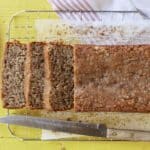
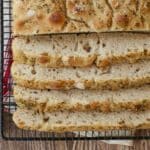
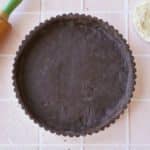
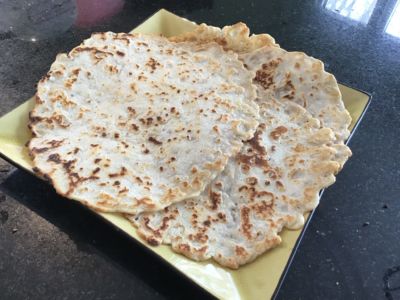
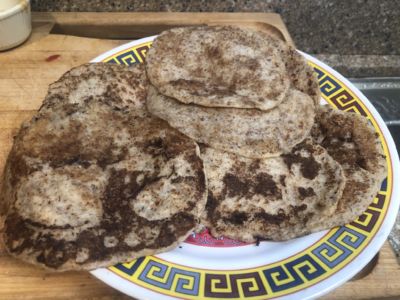

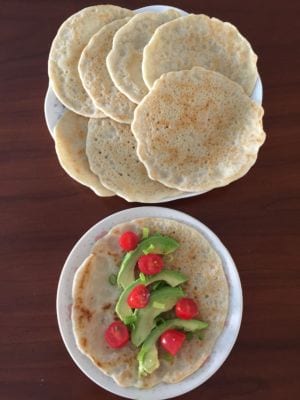
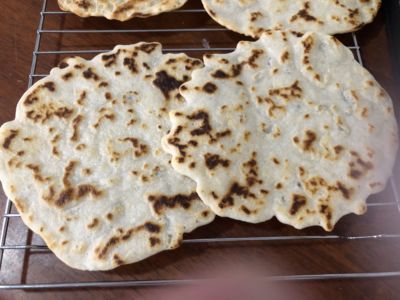
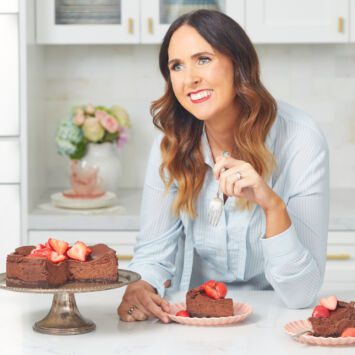


Wow, this is an amazing recipe. I didn’t have coconut milk on hand and used oatmilk with a splash of olive oil instead.
These are so simple to make! I love how they are made with clean, healthy ingredients. I also love the texture of these. Slightly chewy from the tapioca starch, it reminds me of the texture you get from sweet rice flour. They also have a slight nutty taste from the almond flour. I think it’s also really important to add salt because it gives the flatbreads a better flavor. When adding the coconut milk, I gradually added it just in case it was too much. I didn’t use all of it, and my batter was still a little runny .… Read more »
Hi Gemma,
I am one of your fans on Facebook and from Nigeria. I love your recipes and your passion. I will try this flatbread recipe soon. God bless you .
Omolara
What are the measurements?
Is it possible to substitute coconut flour or a combination of coconut and almond flour?
How can I pump up the fiber to get a better net carb?
1 cup is 8 oz in volume but it appears she is using 4 oz by WEIGHT since she also lists 115g
Weight and volume aren’t the same, folks.
I made this recipe and loved it. I am confused a bit though since the printed on line recipe calls for
1Cup Almond flour and 1 Cup Tapioca Starch (4oz /115g).
In fact a1Cup equals 16oz. I am a seasoned baker so I know what consistency batter should look like.
This needs to be corrected because this is a major factor. That said t came out great.
HI Gemma , do you have a gluten free sour dough bread recipe? please share if you do. I have recently been diagnosed celiac and miss my bread
Thank you, Love it, but do know that 1 cup = 8 ozs.; (not the 4 ozs. mentioned).